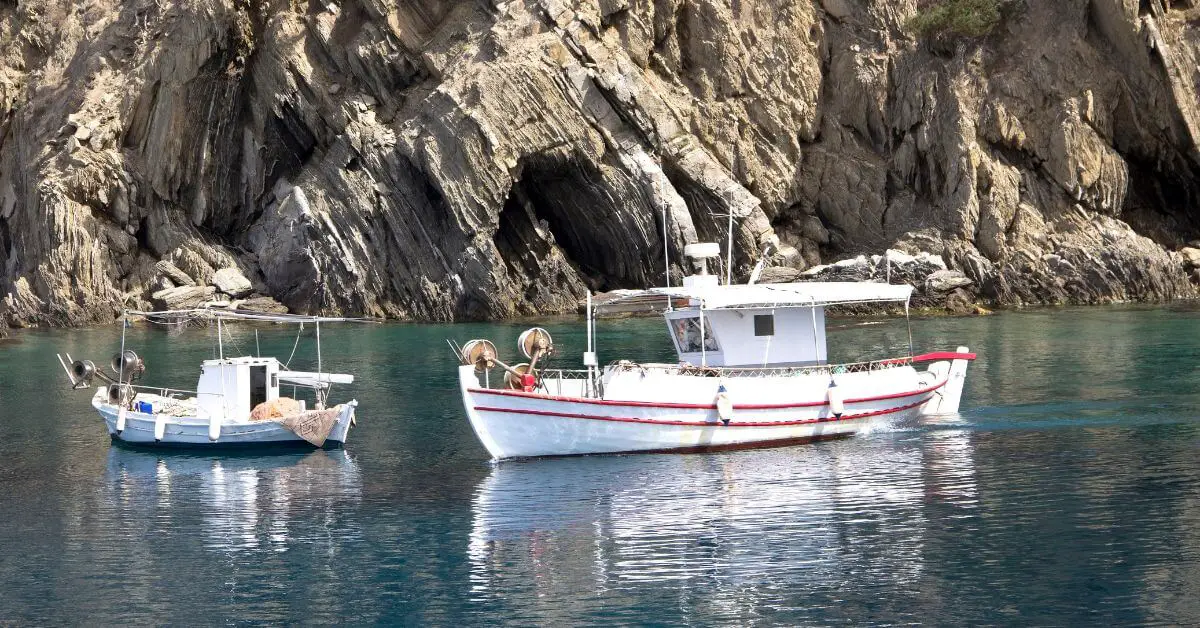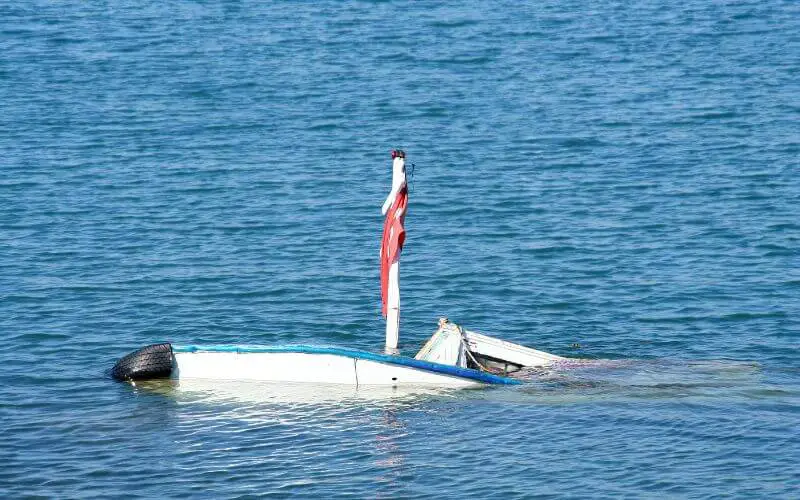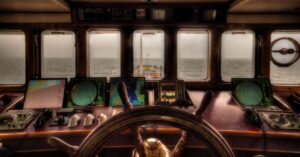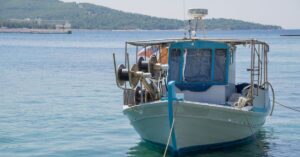Boating can be a fun and relaxing activity that many individuals enjoy. Whether cruising along the coastline, fishing with friends, or participating in water sports, being out on the water provides an escape from the hustle and bustle of everyday life. One of the most important aspects of safe boating is knowing how to avoid collisions with other boats on the water.
Boating can be a fun and adventurous activity, but it also requires careful attention to ensure the safety of everyone on board. It’s important to remember that boating requires a strong sense of responsibility and safety measures to ensure the well-being of all on board. One of the critical aspects of safe boating is avoiding collisions on the water.
This article will provide essential guidelines and rules for avoiding boating accidents and keeping yourself and other boaters safe.
What is Collision on Water?
A collision on water is when two or more vessels or watercraft collide. It can occur in various waterways, including rivers, lakes, and seas, and involves the physical impact between two or more moving or stationary objects on the water. Collisions on water can have serious consequences, ranging from property damage to injuries or even fatalities. That is why boaters need to follow safety guidelines and regulations to minimize the risk of collisions.
The International Regulations for Preventing Collisions at Sea (COLREGS) provide a framework for preventing collisions and promoting safe navigation on international waters. These regulations establish rules for determining the right of way, which help boaters understand their responsibilities when encountering other vessels.
It is important to note that there are different collisions on water, including allisions and grounding. An allision is a collision between a vessel and a stationary object, such as a dock or bridge. On the other hand, grounding occurs when a vessel runs aground and makes contact with the bottom of a body of water.
What Should You Do to Avoid Colliding with Another Boat? Tips for Avoiding Boat Collisions
Collisions can cause very serious damage, injury, or even death. Collision avoidance is every vessel operator’s responsibility.
A collision can be deadly if you run into another boat, hit the dock hard, run over a floating object, or run up on the rocks. The US Coast Guard reported that of the 4,040 accidents that involved 636 deaths and 2,222 injuries in the United States in 2022: “Collisions…were the most frequent first event in accidents, attributing to 55% of accidents, 21% of deaths, and 53% of injuries.”
While the water doesn’t have a clear-cut right-of-way, there are definite rules all boaters must follow. The answer to who is responsible for avoiding a collision between two boats is that both captains share this duty. It doesn’t matter if you’re boating inland or international waters. Here are some tips for avoiding collision with another vessel on water.
1. Be Aware of Your Surroundings
Maintaining awareness of your surroundings is crucial in preventing collisions. Watch for other boats, watercraft, and obstacles in your vicinity. Please take note of their direction, speed, and any potential hazards that may affect your course. This means avoiding distractions and staying focused on the task at hand.
2. Follow Navigation Rules
Boating and navigation rules are implemented to ensure the safety and organization of waterways. Please familiarize yourself with these rules and diligently adhere to them. Key rules to remember include:
- Right-of-Way: Know who has the right-of-way in different situations. For instance, boats crossing from your starboard (right) side typically have the right-of-way, while boats approaching from your port (left) side should yield to you. However, some specific situations may differ, so studying and understanding the rules is important.
- Speed Limits: Many waterways have speed limits that must be followed for safety. Adjust your speed accordingly, especially in crowded areas or when visibility is low.
- Wake and Wash Considerations: Be mindful of the wash and wake created by your boat, as it can disrupt and impact other vessels. Reduce your speed when passing near smaller boats or those moored near the shore.
- Navigation Aids: Pay attention to buoys, markers, and other navigation aids. These can provide crucial information about restricted areas, traffic lanes, and potential hazards.
3. Maintain a Safe Distance
It’s important to always maintain a safe distance from other boats. A good rule of thumb is to keep a distance of at least 100 feet between vessels. However, in crowded areas or areas with reduced visibility, increasing this distance even further is advisable to allow for greater maneuverability.
4. Use Navigational Instruments
Navigational instruments such as charts, GPS systems, and radar are incredibly helpful tools for boaters. Use these instruments to identify potential obstacles, track your position, and monitor nearby vessels. By staying informed and having a clear picture of your surroundings, you can make better decisions to avoid collisions.
5. Implement Proper Signaling
Signaling effectively to communicate your intentions with other boaters is crucial for avoiding accidents. Some important signals include:
- Horns and Whistles: Every boat should have an audible signaling device, such as a horn or whistle. Use these to indicate your presence in areas with limited visibility, especially during reduced speed or when approaching blind corners.
- Navigation Lights: Properly functioning navigation lights on your boat are essential, especially during nighttime or low visibility. They signal the position and direction of your vessel to others on the water, helping them navigate around you.
6. Be Cautious During Maneuvers
Boat maneuvers, such as turning, overtaking, or crossing paths with other vessels, require extra care and attention. Reduce your speed, plan your maneuvers, and communicate your intentions to others using proper signaling. Always assume that other boaters may not see or anticipate your next move, and act accordingly to avoid collisions.
7. Stay Sober and Alert
Boating under the influence of alcohol or drugs greatly increases the risk of accidents. Alcohol and drugs impair judgment, coordination, and reaction time, making navigating safely on the water more difficult. Avoid consuming these substances when boating to ensure your ability to react to sudden situations and avoid collisions.
8. Take a Boating Safety Course
Consider taking a boating safety course, even if you are an experienced boater. These courses provide valuable knowledge and information about safe boating practices, navigation rules, and emergency procedures. By enhancing your boating safety understanding, you can better prepare to avoid collisions and respond effectively in an emergency.
9. Use Common Sense
Having the right of way is a poor excuse for having a collision. Whether you’re in the right or not, if the other boat is not taking appropriate action, then you have to change speed or course to avoid a collision. Your alterations in course to avoid a collision should be made obvious enough so that the other skipper can see what you are doing.
10. Stay Clear of Shipping Lanes
Staying clear of shipping lanes plays a vital role in avoiding boat collisions. Shipping lanes are designated routes commercial vessels use for efficient and safe transportation of goods and materials. Here’s how staying clear of shipping lanes helps:
- Safety: Shipping lanes often have heavy traffic, with large vessels traveling at high speeds. By staying clear of these lanes, recreational boaters can minimize the risk of collision with these larger, less maneuverable vessels.
- Visibility: Avoiding shipping lanes ensures that recreational boats remain visible to larger vessels and vice versa. This visibility allows both parties to act appropriately to maintain a safe distance and avoid potential collisions.
- Right of Way: Commercial vessels traveling within shipping lanes have the right of way, and their course and speed are often difficult to change quickly. By staying clear, recreational boaters respect navigation rules and reduce the likelihood of interfering with the safe passage of larger ships.
- Unpredictability: Shipping lanes can be busy and unpredictable, with vessels of varying sizes and speeds. By staying clear, recreational boaters reduce the uncertainty and potential dangers of navigating these areas.
11. Keep Your VHF Radio on While Underway
Keeping your VHF radio on while underway is a crucial practice that can help avoid collisions with other boats. Here’s how it can contribute to collision avoidance:
- Communication: By keeping your VHF radio on, you can actively listen to and participate in radio communications with other vessels and marine authorities. This helps maintain situational awareness, as you can receive information about the presence of other boats in your vicinity, their intentions, and any potential hazards they may encounter.
- Alerts and Warnings: VHF radios are commonly used to broadcast navigational warnings, weather updates, and safety-related messages from marine authorities. You can receive these alerts by keeping your radio on and promptly adjusting your course or taking necessary actions to avoid potential collision risks.
- May Improve Visibility: Sometimes, vessels rely on VHF radio communications to exchange information regarding their position, course, and intentions. By actively monitoring VHF radio channels, you can gain insights into the movements and intentions of other boats. This can enhance your understanding of the traffic and help you make informed decisions to navigate safely and avoid potential collisions.
12. Do not underestimate the speed of a large vessel
If your boat is slow, a sailboat, for example, you might not be able to take effective evasive action if you find yourself on a collision course with a large ship in the visibility of a quarter-mile or less — the speed differential is too great.
Conclusion
Navigating the open waters requires a combination of vigilance, knowledge, and adherence to boating rules and regulations. By staying aware of your surroundings, following navigation rules, keeping a lookout, maintaining a safe distance from other boats, and using navigational instruments, you can greatly reduce the risk of colliding with another ship.
Effective signaling, cautious maneuvers, and safe boating habits, such as staying sober and taking a boating safety course, further contribute to a safer boating experience. Remember, the responsibility to avoid collisions rests with every boater. By implementing these guidelines, you can enjoy a worry-free and enjoyable time on the water while ensuring the safety of yourself, your passengers, and others sharing the waterways. So, set sail with confidence and make safety your top priority. Happy boating!
Reference





